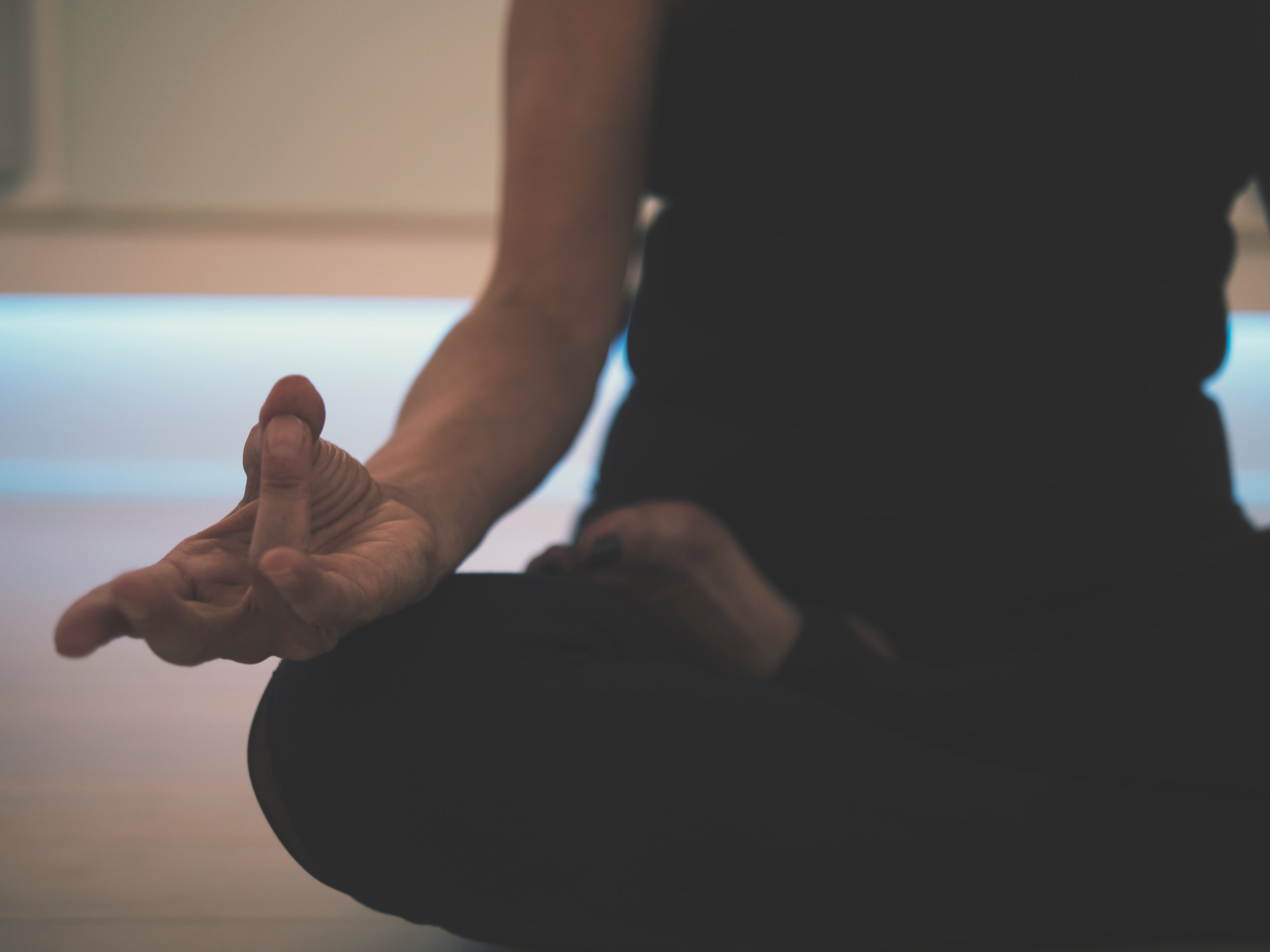A brief history of Ashtanga Yoga. As told by Sri BNS Iyengar
This is the first in a new series of blogs covering the history, philosophy, and mythology of yoga written by Joey Paz, who will be teaching the upcoming Ecuador Adventure Yoga Retreat March 3-11, 2019 at Flowing River Resort. Stay tuned each week for a new entry!
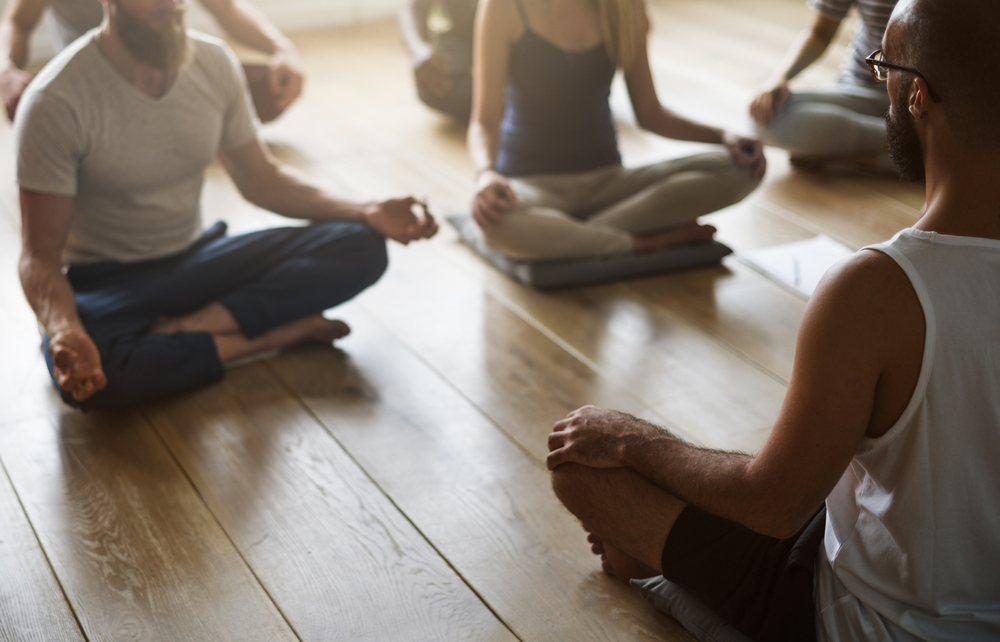
Far back in the mists of time, when the world was still young, Lord Shiva observed that the majority of people living on earth were unhappy – living like beasts in a constant struggle to survive. Life was a harsh and violent struggle. Displeased with this pain and suffering that had become the plight of humanity, Shiva decided that the time had come to undertake his most sacred duty- to destroy all of creation so that a new era could arise and all things be born anew. His lover, Parvati, looked on with sadness as he smeared his body with sacred ash, laced his neck with skulls, and prepared to dance his cosmic dance of death. She decided to intervene. “Oh, Shiva, do not destroy them, but have mercy on them- couldn’t you give them a way to be happy instead?” She begged him. Shiva, seeing the tears of compassion in his wife’s eyes, hesitantly agreed to her wishes. “Very well. Instead of destroying the world, I shall teach you the secrets of Yoga- but you must take this knowledge to the people.” And so it was that Shiva taught Parvati the path to realization, which she in turn taught to a select group of Rishis, establishing the secrets of Kundalini Yoga on the earth. However, the Rishis did not share this knowledge with the masses of humanity, believing it to be far too dangerous and esoteric for the common people. And thus, the majority of humanity went on living the same harsh and undignified lives as before. Taking notice of this, Lord Vishnu assumed the form of an avatar named Dattatreya, who descended to earth for the purpose of establishing a new lineage that could be practiced by everyone- Hatha Yoga. The practices of Hatha Yoga soon became established in the world, as Dattatreya wandered tirelessly, teaching Hatha Yoga to wandering ascetics all over India. His efforts were not in vain- for 900 years, there was paradise and peace. Because everyone practiced yoga, India was perfect- free of war, crime, poverty, and disease. This Golden Age was not to last, however. By the time Dattatreya’s 9th disciple, Swatmarama, had begun to pen the Hatha Yoga Pradipika, compiling the practices in an attempt to preserve the teachings, great darkness and disaster was afoot.
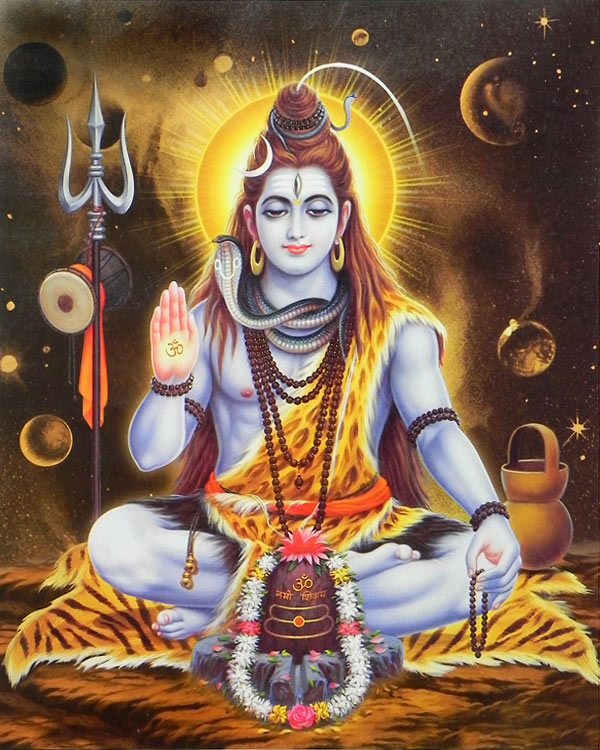
During the 900 year period of peace and stability brought about by the widespread practice of Hatha Yoga, society had made great advances culturally and scientifically. As a result, more and more yogis were leaving the forests and the ashrams, abandoning the austere kriyas and penances of yoga sadhana for the relative comfort and ease of city life. With this change in lifestyle they soon learned that to live in the city, one must have money. They began to use their previously attained siddhis and yogic powers not as a way to get realization, but to obtain money- and thus, the once proud keepers of the Hatha Yoga lineage, corrupted by city life, devolved into wandering bands of thieves and con artists. The principles of yoga were lost, and society eventually turned against yogis, regarding them as little more than scoundrels, tramps, and tricksters. The citizens, fed up with their antics and debauchery, formed mobs to drive the yogis out of their cities. In retaliation, the yogis took up arms and formed battalions – the threat of all-out war loomed on the horizon.
At the height of this tension, there was one righteous yogini left on earth, a woman named Gonika, whose dedication and devotion to the true principles of yoga would prove to save the world. To her we shall return.
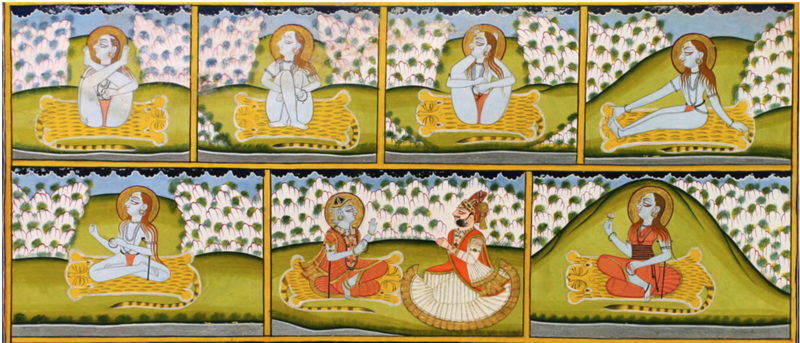
Meanwhile, in the cosmic realms, Vishnu was resting on his bed, Adi Sesha Naga, the thousand-headed serpent whose coils hold the universe intact, observing Lord Shiva as he practiced his dance – it was so graceful, so beautiful, and pleased Vishnu so much, that he began to vibrate and become lighter than air. When Shesha noticed this, he asked, ‘My lord, what is happening? You are becoming weightless!’ To which Vishnu replied by pointing to Shiva’s dance. Shesha, always eager to please his lord, was determined to learn this dance himself. He asked Shiva to teach him. “In order to learn this dance,” Shiva said, “there are two conditions: first, you must take human birth upon the earth. Second, the principles of yoga have been compromised and corrupted, as you can see from the battle brewing on earth. You must restore yoga to its true purpose.” Shesha quickly agreed to these conditions.
Let us now return to the last righteous yogini, Gonika, who was devotedly practicing Surya Namaskar on the bank of a river, praying to Lord Surya to grant her a son to whom she could pass on her knowledge of Yoga. Cupping water from the river in her hands to offer up to Surya as oblation, she looked down to see a tiny half-boy, half serpent, coiled in her palms. It was Shesha, in fulfillment of Shiva’s promise, taken birth in half-human half-serpent form. “I shall call you Patanjali,” she said, “And I will teach you all proper principles of yoga, that one day, harmony will be restored upon this earth.” And so it was that Patanjali learned the principles of yoga, composed his famous Yoga Sutras, establishing the 8 limbs of Ashtanga in the world. For thousands of years, Patanjali’s Sutras remained the most cohesive and widely revered text an manual on the practice of Yoga ever produced.
But again, the practice of yoga in India was to become compromised… Not by corruption this time, but from external invasion. It is here we must fast forward a few millennia to Mysore, India, in the early 20th century.
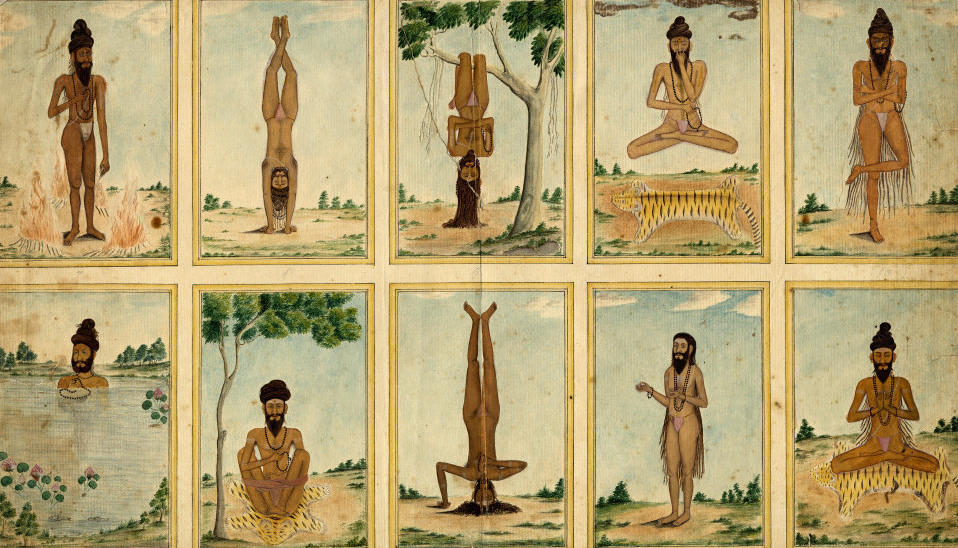
India in the 1930s was in dire straits. The British occupation had taken its toll- poverty and famine were egregious and rampant. For this reason, the practice of yoga had again fallen into disuse among the Indian people – for who can think to practice yoga when you don’t know where your next meal is coming from? In the south of India, the kingdom of Mysore, there was a king called Maharaja Krishnaraja Wodeyar, Who looked upon the dire poverty with great shame. He sought to bring his kingdom back to a place of abundance, strength, & confidence that once defined his people. Around this time, he met a yogi named Krishnamacharya, who had just returned from the Himalayas, where he had spent seven years learning a hybrid of Hatha, Kundalini, and Ashtanga Yoga from his guru, a cave-dwelling yogi called Ramamohan Brahmachari. Recognizing Krishnamacharya’s genius, the king immediately invited him to Mysore, offered him a salary, placed him in the Mysore palace, where Krishnamacharya had his own wing, and plenty of royal funding to begin the world’s first “Yoga program.” This period marked a renaissance of yoga asana in India. Krishnamacharya and his top students begin to formulate unique and potent sequences of yoga, combining them with principles of mudra, pranayama, meditation, ethics, and psychology, coining the term “Vinyasa” to describe their unique method of linking poses together using Ujjayi breath. Two of his students in particular, Pattabhi Jois and BNS Iyengar, spent the next few decades fine-tuning this vinyasa method to such a degree that it began to attract worldwide attention, attracting scores of Westerners to Mysore to learn yoga. Among them, David Williams, Danny Paradise, Doug and David Swenson, Nancy Gilgoff, and others, traveled to India during this golden era of Ashtanga, bringing the practices back with them to California and Hawaii. It was here where this powerful method and transmission of yoga took root, and swept across the USA and Europe all throughout the 1970s and 80s, influencing and giving birth to the majority of yoga styles in the west that have since sprung up. It was in the wake of this great renaissance that I took my first yoga class at Ashtanga Yoga Studio in Norman, Oklahoma in 2008. Since then, I have had the great honor of returning to India on many occasions to learn the methods and philosophy of this lineage, studying this practice in its depth with Guruji, Sri BNS Iyengar, one of the last surviving students of Sri T. Krishnamacharya and the world’s most elder living master in the practice and philosophy of Ashtanga Yoga. It is this practice and lineage that I am honored to share in greater depth, March 3-11, 2019 at the Ecuador Adventure Yoga Retreat at Flowing River Resort.
You can view the complete syllabus and retreat schedule, as well as enroll HERE. Feel free to contact me at joeypazyoga@gmail.com for any questions about the schedule or practices. Hari Om!
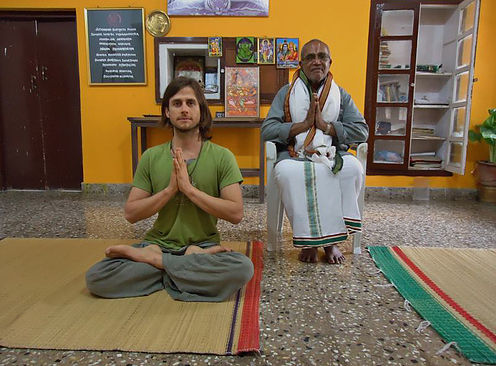
Joey Paz (RYT-500), who will be teaching our Yoga retreat March 3-11, 2019, is a longtime practitioner and devotee of the 8 limbs of Ashtanga Vinyasa Yoga in the lineage of Sri BNS Iyengar. Click here to read his complete bio.


